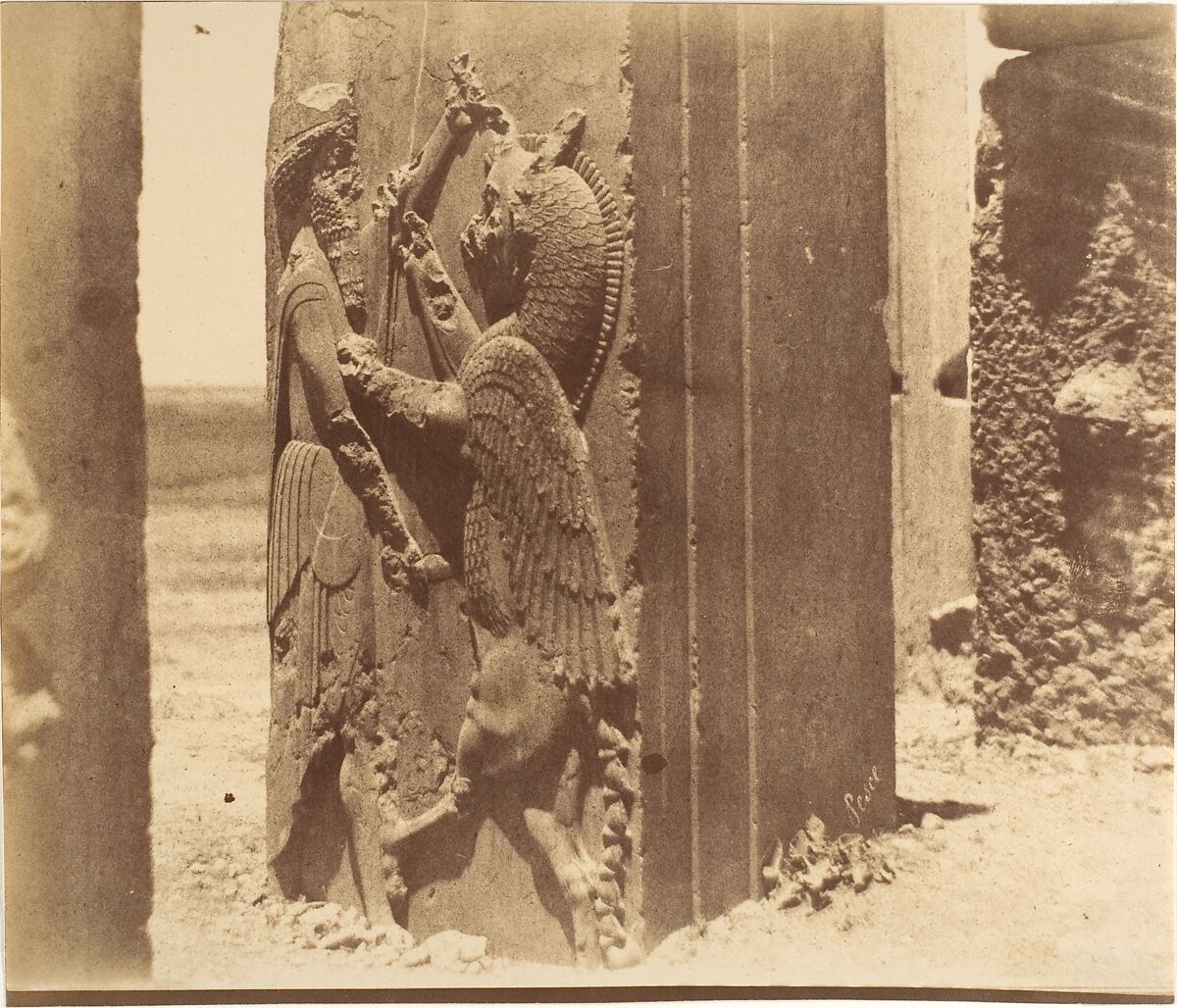
The technology and art of photography emerged in nineteenth-century Europe. And so, when a part of the world outside Europe was well-photographed in those days, it tended to be a traveling European behind the camera. Take John Thomson, previously featured here on Open Culture, for his photos of China in the eighteen-seventies. Even before that, an Italian colonel and photographer named Luigi Pesce was hard at work documenting a land geographically closer to Europe, but hardly less exotic in the European worldview of the time: Persia, or what we would today call Iran.

“According to scholars and historians, the first photographer in Iran was Jules Richard, a Frenchman who, as stated in his diaries, arrived in Tehran in 1844,” says the web site of the National Museum of Asian Art.
“He served as the French language tutor of the Gulsaz family and took daguerreotypes of Mohammad Shah (reigned 1834–48) and his son, the crown prince, Nasir al-Din Mirza.” Alas, these photographs seem to be lost, much like most others taken before Pesce’s arrival in the country in 1848, “during the reign of Naser al-Din Shah Qajar, to train Iranian infantry units.”
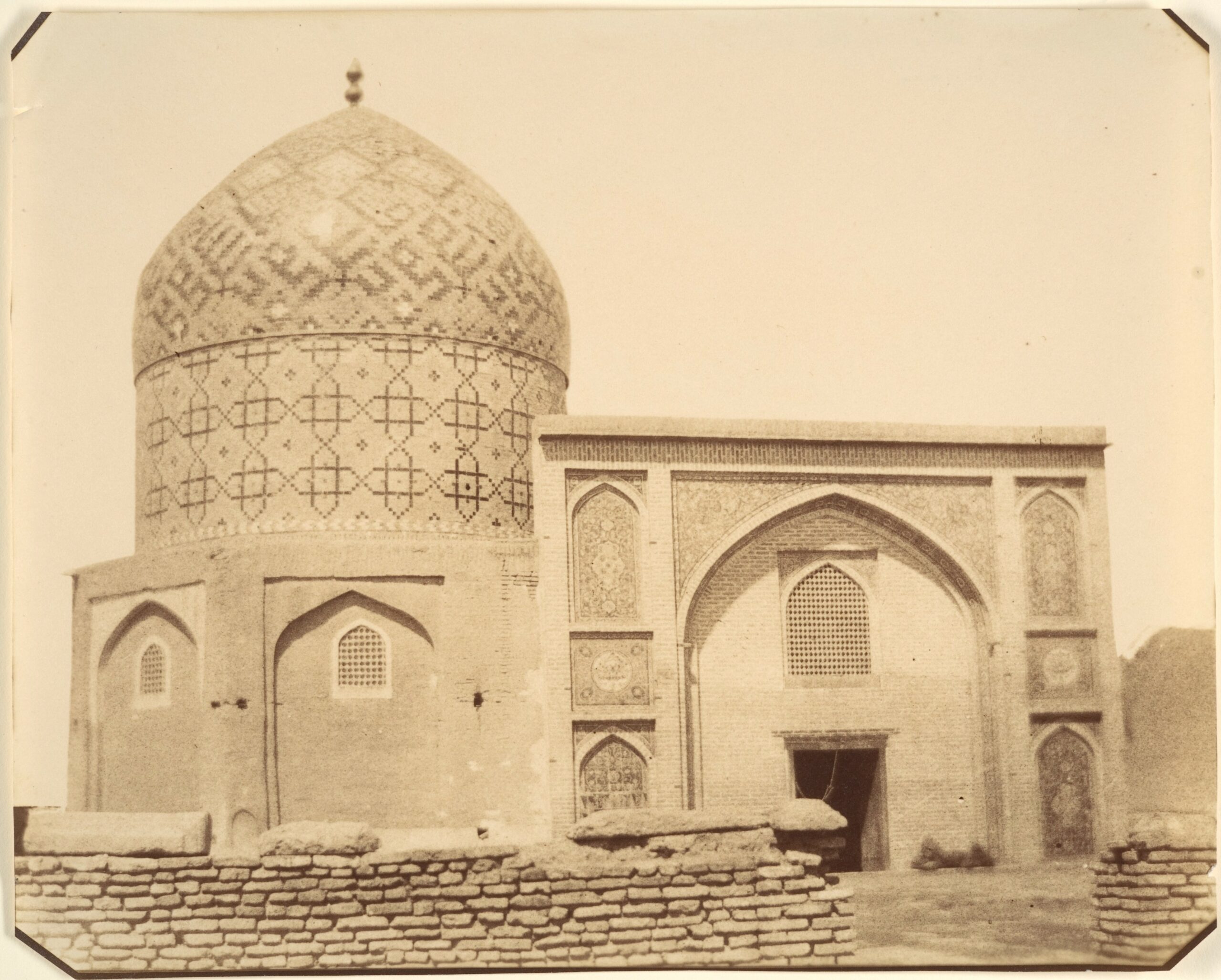
Pesce’s photographic subjects included Naser al-Din himself, pictures of whom appear in the online collection of Pesce’s work at the Metropolitan Museum of Art. It was the Met that received a copy of the photo collection Pesce produced of Iran’s ancient monuments — probably the very same copy that the photographer had originally sent to Prince William I, King of Prussia.
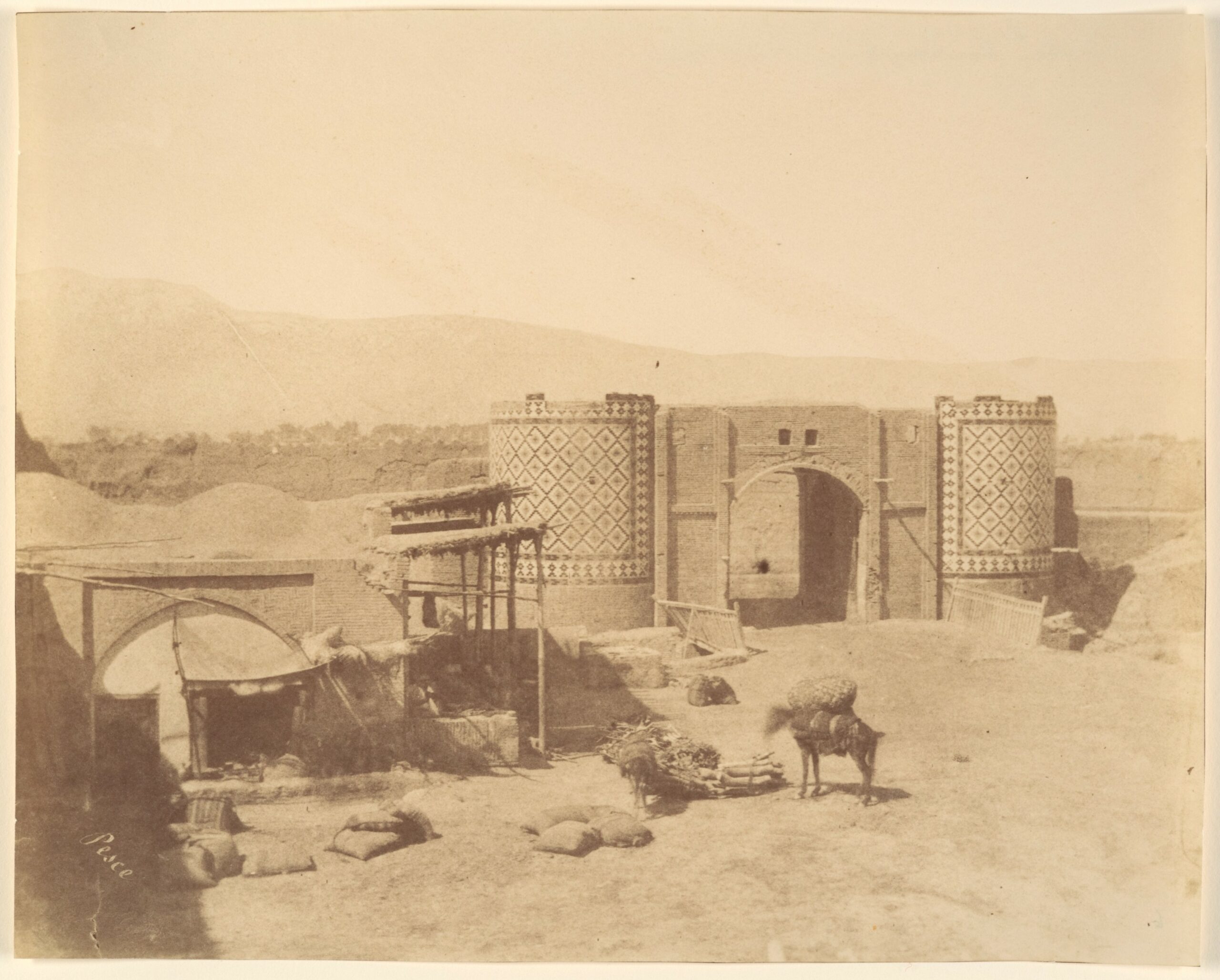
In those days, even such exalted figures had a great deal of curiosity about far-flung realms, and before photography, they had no easier way of seeing what those realms really looked like than making the arduous journey themselves.
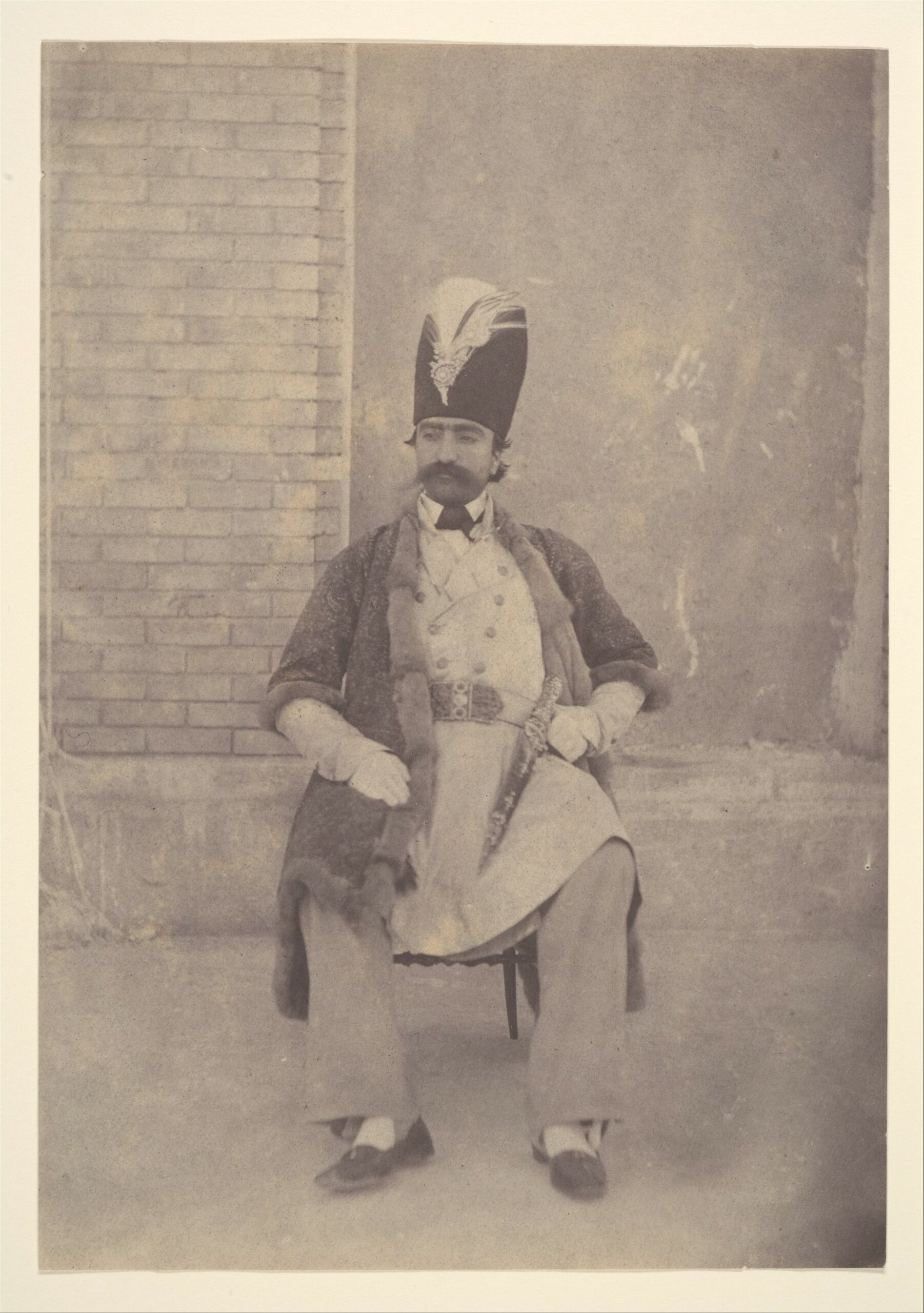
The sites captured in this collection include Toghrol Tower, the Tomb of Seeh‑i Mumin, and the Mosque of Nasser-eddin Shah — as well as Pasargadae, Naqsh‑e Rustam, and Persepolis, the famed ceremonial capital complex of the ancient Achaemenid Empire, which Pesce was the first to photograph. Or at least he was the first to succeed in doing so, Naser al-Din having previously sent Richard off to make some daguerreotypes of Persepolis that never came out.
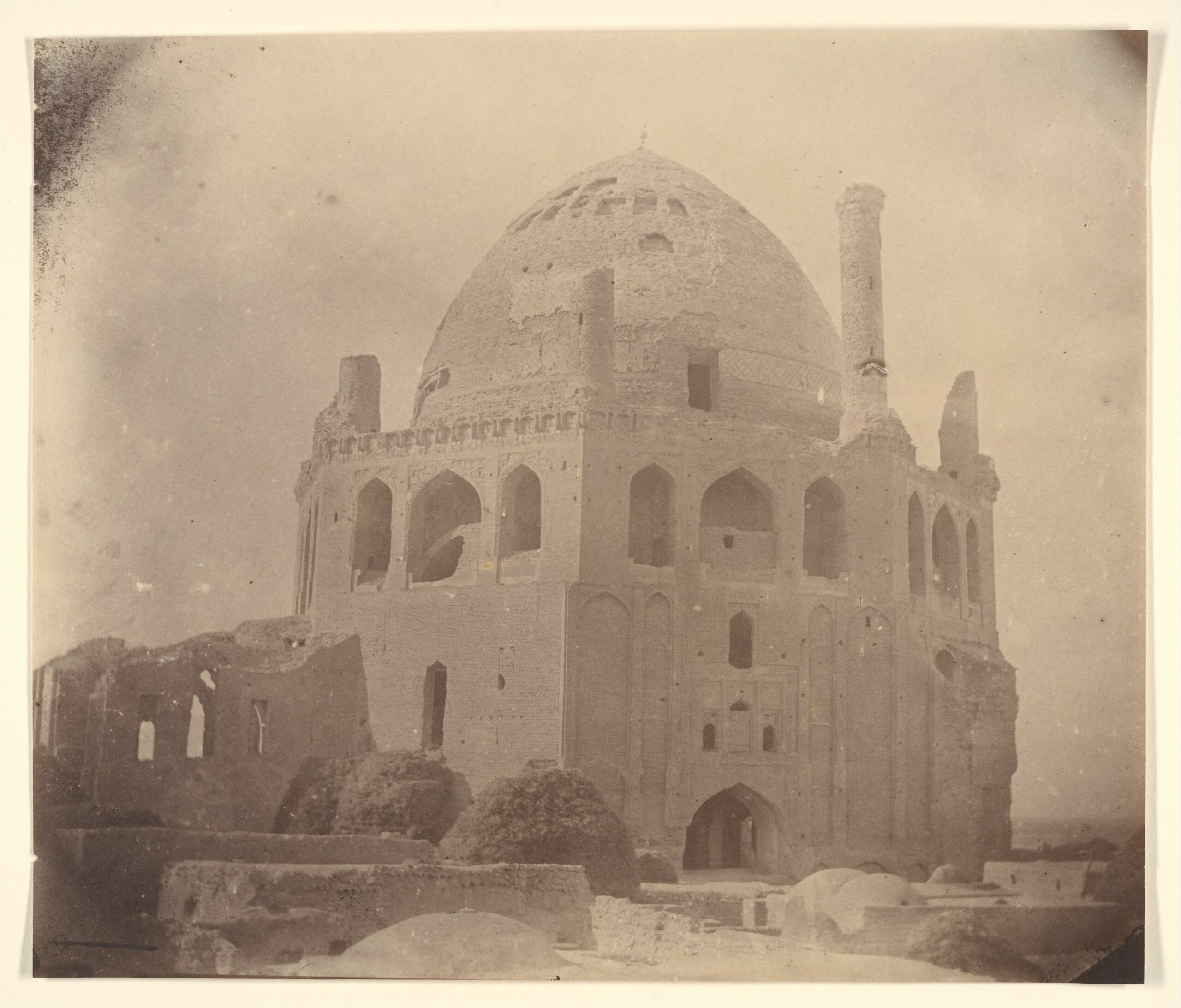
But even Pesce’s photographs, fully executed using just about the height of the technology at the time, no longer have the immediacy they would have when Prince William gazed upon them; more than a century and a half later, they have a patina of historical distance that shades into unreality, making them feel not unlike ruins themselves. You can also view more photos on Google Arts and Culture.
Related content:
New Archive of Middle Eastern Photography Features 9,000 Digitized Images
Behold the World’s Oldest Animation Made on a Vase in Iran 5,200 Years Ago
The Oldest Known Photographs of Rome (1841–1871)
700 Years of Persian Manuscripts Now Digitized & Free Online
Based in Seoul, Colin Marshall writes and broadcasts on cities, language, and culture. His projects include the Substack newsletter Books on Cities, the book The Stateless City: a Walk through 21st-Century Los Angeles and the video series The City in Cinema. Follow him on Twitter at @colinmarshall or on Facebook.


I
Would
Like to discuss the Esfahani and yazdi cultures.
Could be they turn in ruins for realz with the way Iran runs itself.
Iran is a fabulous place to explore and consider the cradle of civilization.
One of ten countries with such a great culture.
We should bypass politics and do not miss out for visiting this country.
thank you,for a beautiful article and a fascinating culture.
No lol thanks I’m gay and I don’t wanna risk my life getting killed for being myself, I prefer the photos
Fabulous ancient relics of Iran. Are they still in existence? Can a US citizen travel to Iran as a tourist to see some of those ancient relics? Thanks.
To see the Middle East is on my Bucket List. Sadly I don’t have the $$$ to travel. And being a elder woman,safety would be an issue.I long to see Petra,Constantinople, Jerusalem,etc. Everywhere I’ve
read and studied about. Alas, maybe in my next life.…
Great history and photos
Being a Parsi, I toured Iran twice. It was like recharging my spiritual battery. These photos have made me very very happy & proud. Thanks a lot
Fascinating pictures.
Hell yeah.. why not??
Don’t listen to what they say about Iran. Believe me my friend, u will be surprised. You are more than welcome here. Everyone will respect and help you totally.
So„ come and get surprised ;))
Hell yeah.. why not??
Don’t listen to what they say about Iran. Believe me my friend, u will be surprised. You are more than welcome here. Everyone will respect and help you totally.
So„ come and get surprised ;)
If we run ourselves badly, why do you care? Let us be destroy by ourselves and you’ve got no enemy and nothing to worry. Fir that reason stop meddling and disrupting Iran.
Peace out ✌🏾
Yeah, they are still in existence but the globalists and leftists led by US govt has been changed all the reality of Iran since 1979! The time those lunatic politicians tended to put a puppet govt in Iran and replaced the monarchy system by fu**king republic govt just in order to facilitate looting the country’s crude oil, gas and mineral resources for consuming in their factories in F.china!
That’s it. If you wanna blame, you should blame the F.US govt and their fu**king globalist policies only!!!
You can travel to Iran as a tourist tour
Yes
Way to encourage tourism bro!! Stupid people like you are the main reason that tourists are afraid to travel to our beautiful country
Don’t worry. You wont be tresspassed if you respect the people.
Those legendary ancient works you say, if you mean Persepolis, Pasargad and the tomb of Cyrus, I must say that they are fakes and were later forged by Reza Palani and Mohammad Reza Palani and attributed to the Achaemenidians.If you research the fakes about the Achaemenids, you will find shocking information about the historical fakes in Iran. All the real works in Iran are related to the Turks.
I live in Serbia, and have been to all those places in my 50ies and 60ies, with groups, and never felt threatened in any way.
My suggestion is for you to try to come and live in Europe for a few months in some cheaper country like Albania, and check how much your desired trips cost from here. It would take some planing, but could be very rewarding.
Thank you! I loved the photos
and the story very much.
Iranians gained more than 20 years in lifespan alone after toppling the US reinstalled Shah in 1979 and is today on the verge of becoming a Very HighlyD Developed Nation according to the UNDP’s Human Development Index (which was flat and not rising before the revolution)
Love you
You love me??
Fuck you id rather not be the next hostage.…